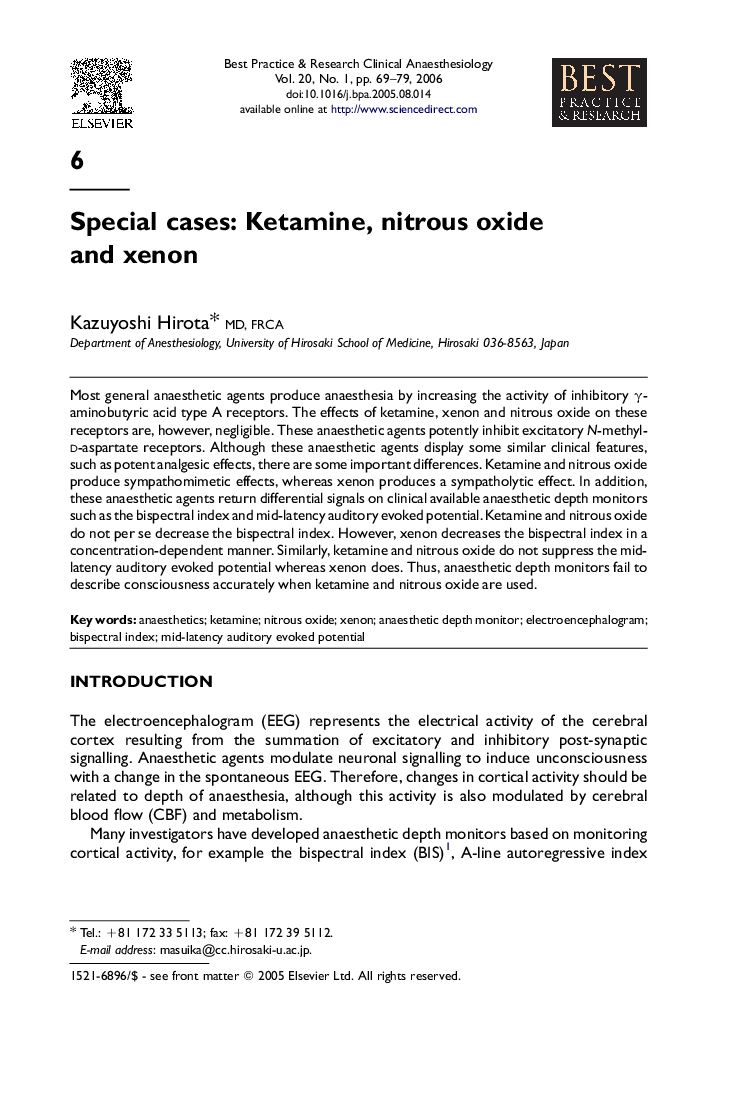| کد مقاله | کد نشریه | سال انتشار | مقاله انگلیسی | نسخه تمام متن |
|---|---|---|---|---|
| 2748932 | 1149221 | 2006 | 11 صفحه PDF | دانلود رایگان |
عنوان انگلیسی مقاله ISI
Special cases: Ketamine, nitrous oxide and xenon
دانلود مقاله + سفارش ترجمه
دانلود مقاله ISI انگلیسی
رایگان برای ایرانیان
کلمات کلیدی
موضوعات مرتبط
علوم پزشکی و سلامت
پزشکی و دندانپزشکی
بیهوشی و پزشکی درد
پیش نمایش صفحه اول مقاله

چکیده انگلیسی
Most general anaesthetic agents produce anaesthesia by increasing the activity of inhibitory γ-aminobutyric acid type A receptors. The effects of ketamine, xenon and nitrous oxide on these receptors are, however, negligible. These anaesthetic agents potently inhibit excitatory N-methyl-d-aspartate receptors. Although these anaesthetic agents display some similar clinical features, such as potent analgesic effects, there are some important differences. Ketamine and nitrous oxide produce sympathomimetic effects, whereas xenon produces a sympatholytic effect. In addition, these anaesthetic agents return differential signals on clinical available anaesthetic depth monitors such as the bispectral index and mid-latency auditory evoked potential. Ketamine and nitrous oxide do not per se decrease the bispectral index. However, xenon decreases the bispectral index in a concentration-dependent manner. Similarly, ketamine and nitrous oxide do not suppress the mid-latency auditory evoked potential whereas xenon does. Thus, anaesthetic depth monitors fail to describe consciousness accurately when ketamine and nitrous oxide are used.
ناشر
Database: Elsevier - ScienceDirect (ساینس دایرکت)
Journal: Best Practice & Research Clinical Anaesthesiology - Volume 20, Issue 1, March 2006, Pages 69-79
Journal: Best Practice & Research Clinical Anaesthesiology - Volume 20, Issue 1, March 2006, Pages 69-79
نویسندگان
Kazuyoshi MD, FRCA,